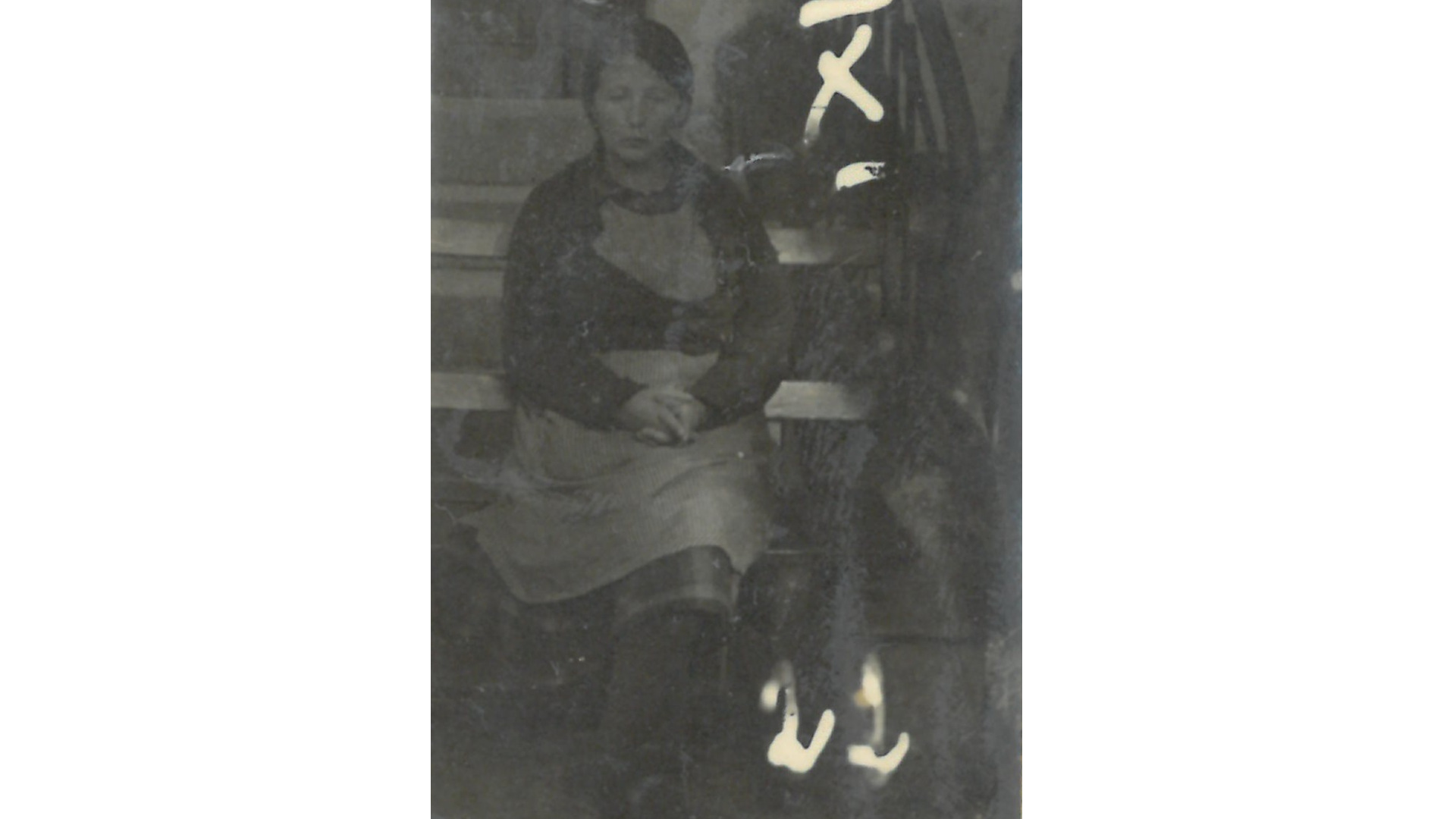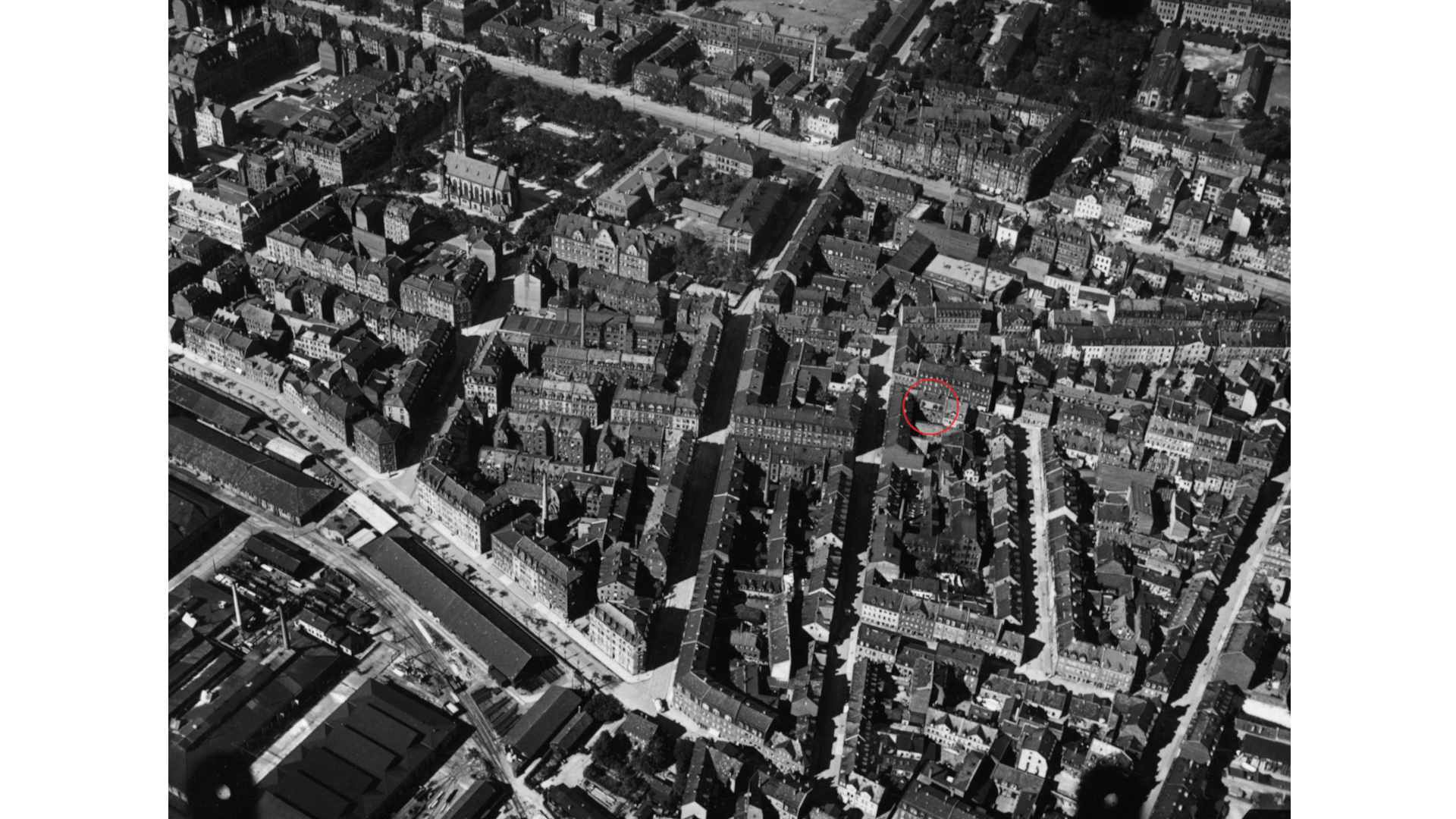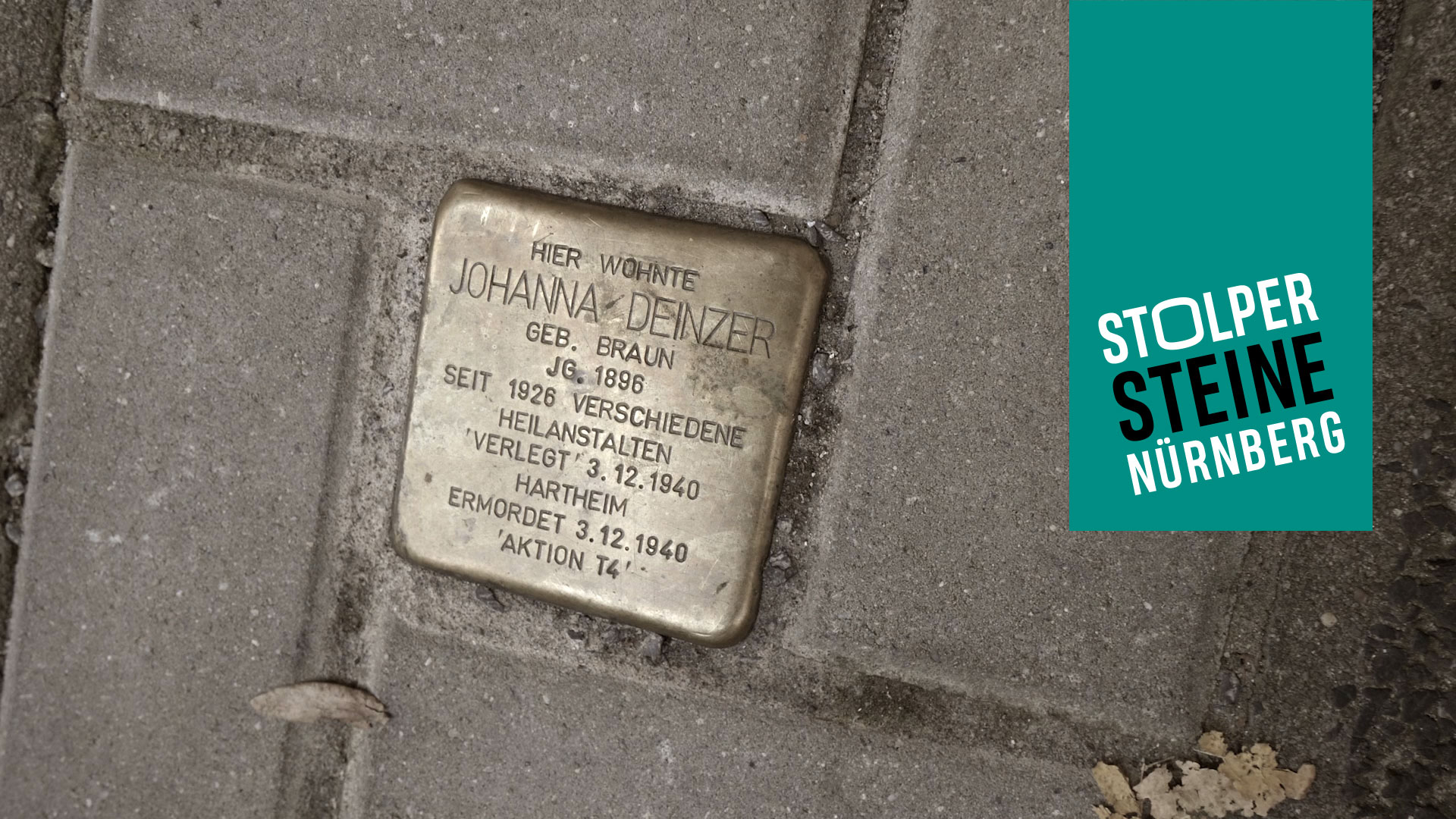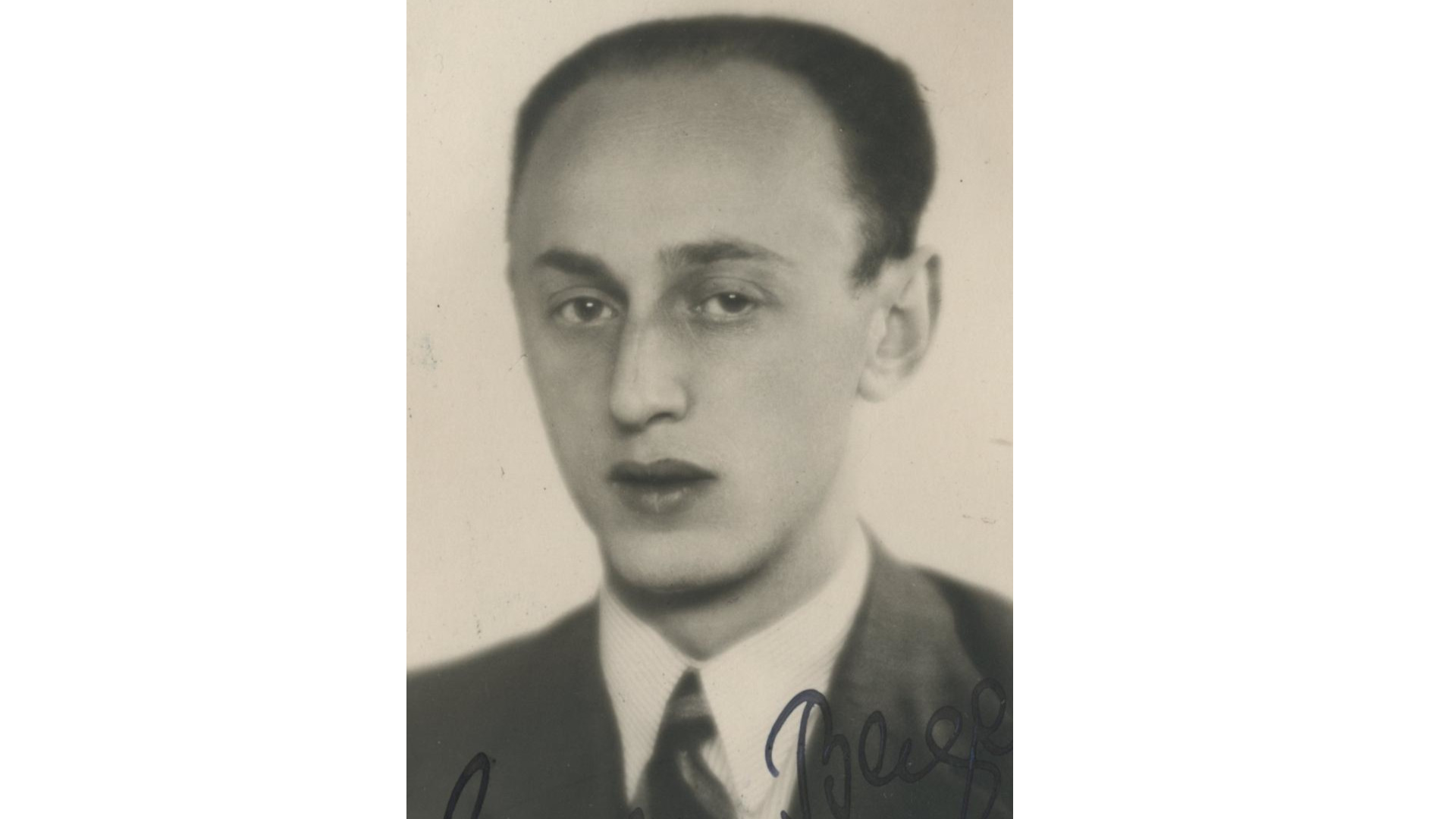| Location of stone: Obere Seitenstrasse 15 | District: Gostenhof |
| Sponsor: Rotary Club Nuremberg Kaiserburg | Laying of stone: 11 June 2021 |
Biography
On 11 June 2021 Gunter Demnig laid six stumbling stones in Nuremberg for victims of National Socialist medical crimes. The victims’ lives were researched by pupils who attended a P-Seminar at Nuremberg’s Hermann Kesten College, led by Dr Maren Janetzko and Dr Pascal Metzger. The project was carried out in cooperation with the history association Geschichte Für Alle e.V. (History for Everyone). To finance the laying of the stones, the seminar participants applied successfully for a donation from Nuremberg’s Rotary Club. One of the biographies reconstructed during the project was that of Johanna Deinzer. On the grounds of mental disability, she became a victim of the National Socialists’ “euthanasia” programme.
Johanna Braun was born in Stuttgart on 25 February 1896. Her father Christian Braun was a decorator. She married electrical fitter Georg Deinzer (also born in Stuttgart) and moved with him to Nuremberg at the beginning of the 1920s. They found a flat in Obere Seitenstrasse 15. The couple had five children.
In her late 20s Johanna suffered from hallucinations and delusions. The doctors diagnosed schizophrenia. From December 1926 until February 1927, she was a patient in the psychiatric hospital in Erlangen, where she was placed under guardianship. Johanna improved, was discharged from the hospital and returned home.
At the beginning of November 1927, Johanna sought help at Nuremberg City Hospital. Six weeks later she was transferred to the psychiatric hospital in Ansbach. Because her condition did not improve, she had to remain there.
National Socialist ideology separated human beings into “valuable” and “worthless”. Countless numbers of people suffering from various illnesses and disabilities, as well as those who were forced to live on the fringes of society, were denied the right to life by the National Socialist state. The term used for what was in fact systematic killing was “euthanasia”. In the years 1940/41 more than 70,000 people were murdered as part of the “T4” operation. The name for the programme of mass murder is an abbreviation of Tiergartenstrasse 4, the address in Berlin of the headquarters of the government agency that implemented the policy.
Within the framework of “Aktion T4” Johanna Deinzer was moved to the killing centre at Hartheim Castle near Linz on 3 December 1940, where she was murdered in the gas chamber.








